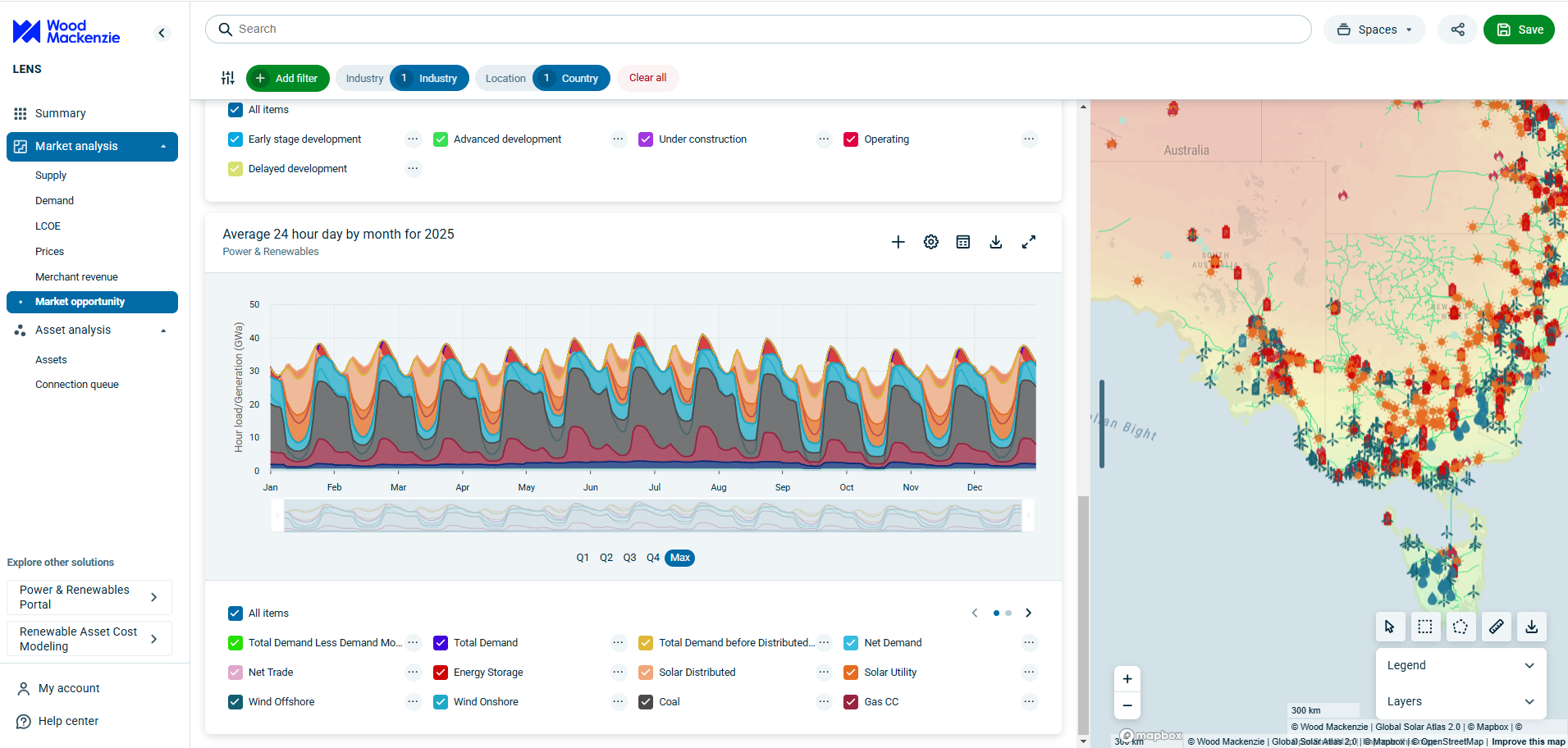Get Ed Crooks' Energy Pulse in your inbox every week
Threats to oil supplies show the limits of US production growth
If crude prices rise, US output growth will accelerate. But the response cannot be as quick or as large as for the OPEC countries
9 minute read
Ed Crooks
Vice Chair Americas and host of Energy Gang podcast

Ed Crooks
Vice Chair Americas and host of Energy Gang podcast
Ed examines the forces shaping the energy industry globally.
Latest articles by Ed
-
Opinion
Keeping cleantech investment alive
-
Opinion
Can energy close US trade gaps?
-
Opinion
Tariff shockwaves shake the energy industry
-
Opinion
How can the power industry meet the challenge of rising demand?
-
Opinion
Is the US being left behind in the race to develop new clean energy technologies?
-
Opinion
US E&Ps look for international growth
Nassim Nichola Taleb, the great theorist on risk and uncertainty, tells a parable about turkeys living on a farm. They get fed every day, and life seems good, until Thanksgiving arrives when they sharply revise their views about the world. The point of the story is that apparently rare events can have extreme consequences, and it makes sense to protect yourself against those risks if you can.
The possibility of one of those “tail-risk” events hitting the world economy has risen in recent weeks as a result of the escalating conflict in the Middle East. As my colleague Simon Flowers, Wood Mackenzie’s Chief Analyst, wrote last week, there is a potentially large threat to global oil supplies if strikes target essential infrastructure and/or the Strait of Hormuz is closed to tanker traffic.
For the US, the strength of its domestic oil industry might look like an important safeguard against the impact of such a supply shock. The US is now by some distance the world’s largest oil producer, with output this year averaging about 13.2 million barrels a day of crude.
The US industry has shown that short-cycle production can respond relatively quickly when market conditions are right. Over the past three years, the US has added about 2 million b/d of additional tight oil production. In 2017-19, it added about an extra 3 million b/d in just two years.
Indeed, the strength and flexibility of US oil output has led to suggestions that the nation’s Strategic Petroleum Reserve (SPR), launched in 1975 as protection against external supply shocks, is now redundant and should be sold off.
That is not a consensus view in US politics. Under the Biden administration, between January 2020 and July 2023, the oil held in the SPR dropped by about 288 million barrels, as a result of a combination of emergency sales and scheduled sales mandated by Congress.
However, the administration has since then been buying back oil, partially refilling the reserve. As of September, the Department of Energy had purchased over 50 million barrels, at an average price of about US$76 per barrel, compared to an average price of US$95 for 2022’s emergency sales.
Under its commitment to the International Energy Agency, the US has pledged to maintain 90 days of cover for its net imports of petroleum, in government and private stocks. But it is currently a net exporter, and on Wood Mackenzie forecasts, is set to remain in that position for decades, so the commitment does not require any particular level for the SPR.
A rise in oil prices can still cause economic damage in the US, driving up inflation and cutting consumers’ real incomes. Even if, at the aggregate level, the total effect on GDP is neutral or positive, the distribution of the impact across the US can still be a problem.
Higher prices also hit US trading partners and allies around the world that are net importers, delivering a shock to the world economy. So, the US, in general, has an interest in smoothing out any price spikes if it looks like oil is moving too far and too fast.
The question is whether the US tight oil industry can provide sufficient supply flexibility to play that role, obviating the need for government-controlled reserves such as the SPR.
Wood Mackenzie view
When crude prices rise, short-cycle tight oil can certainly respond much more quickly than offshore production that needs exploration, appraisal and development taking many years. On average, the time from stepping up US onshore drilling and completion activity to increased production is about six months. But there are two key constraints that can restrict producers and limit any ramp-up in activity in response to market conditions.
The first is investors’ expectations. Over the past four years or so, shareholders have been demanding capital discipline from E&P companies. At least initially, any rise in oil prices would be seen as an opportunity to strengthen free cash flow, rather than step up activity.
Alex Beeker, Wood Mackenzie’s research director for corporate research, says that with West Texas Intermediate (WTI) crude at around US$70 a barrel, which was where it was in September, US E&Ps’ average reinvestment rate was rising to about 70% of their operating cash flow, up from 62% in 2023. As oil prices rise, the first response is to let that reinvestment rate fall again, creating more headroom for using cash for distributions to shareholders.
The other constraint is in the supply chain. Utilisation rates for the most highly specified rigs and for dual fuel and electric pumps for hydraulic fracturing are running above 90%. Attempting to ramp up activity rapidly would run into availability problems and drive up costs in the supply chain.
Nathan Nemeth, Wood Mackenzie’s principal analyst for Canadian and Lower 48 unconventionals research, did some modeling in August to estimate the impact that oil price changes might have on US production.
His conclusion was that if WTI were to average US$90 a barrel next year, about US$10 above our base case forecast, we would expect US tight oil production to be about 550,000 barrels a day higher.
With US producers typically taking about three to five months to respond to a change in prices, the full impact on production would come about eight to 12 months after the move in WTI.
That increase in production is not trivial, and would play a role in moderating any rise in crude prices. When people talk about the US as “the new swing producer” of oil, they are not entirely off-base.
But there is a big difference between that kind of production growth and the rapid responses that can come from Saudi Arabia and other members of OPEC that have been curbing production. Saudi Arabia, the United Arab Emirates and Kuwait can bring the great majority of their spare capacity into production within 30 days.
It is also very different from the response that is possible from the SPR, which has a maximum drawdown capacity of 4.4 million b/d and can get oil into the market just 13 days after a presidential decision.
The US has some protection against disastrous tail risk events in world oil markets. But thinking it is completely immune from any adverse impact would be like being a turkey living in blissful ignorance of Thanksgiving.
In brief
Equinor has acquired a 9.8% stake in Ørsted, making it the second-largest shareholder in the company after the Danish state. Anders Opedal, Equinor’s CEO said the deal reflected confidence in the long-term outlook for offshore wind, despite the industry’s current difficulties. He also said Ørsted’s producing assets were a good complement for Equinor’s portfolio of large offshore wind projects that are under development. Equinor said it was “supportive of Ørsted’s strategy and management,” and it is not seeking board representation.
Chevron has announced the sale of oil sands and shale assets in Canada to Canadian Natural Resources Limited for US$6.5 billion in cash. It is selling a 20% non-operated stake in the Athabasca Oil Sands Project, a 70% operated stake in assets in the Duvernay shale, and related interests, all in Alberta. Chevron plans US$10 billion to US$15 billion of asset sales by 2028, including an exit from the UK.
Hurricane Helene caused “unprecedented” damage to the electricity system in North and South Carolina, Duke Energy said over the weekend. As of Saturday, about 246,000 customers remained without power across the two states, after more than 2.3 million had had their service restored. The company said it could be days before it completed restoration work.
Meanwhile, Hurricane Milton is approaching Florida, having intensified to a Category 4 storm on Sunday night. As of Monday morning, it was on course to make landfall late on Tuesday or early on Wednesday.
The US government’s National Oceanographic and Atmospheric Administration, noted last year that “While greenhouse gas-induced warming may have… affected Atlantic hurricane activity, a detectable greenhouse gas influence on hurricane activity has not been identified with high confidence.” The conclusion is based on sources including the Intergovernmental Panel on Climate Change’s Sixth Assessment Report.
Other views
What the Middle East conflict means for oil and LNG – Simon Flowers and others
Trump’s tariff plan: implications for the future of global liquids trade – Alan Gelder and others
RE+ 2024: Our 7 biggest takeaways – Max Issokson and others
Hydrogen offtake contracts: securing project outcomes – Murray Douglas
From digester to burner tip: navigating the fast-growing RNG industry – Kateryna Filippenko
Exploring the growth of RNG/Biomethane in North America
US Grid-Scale Energy Storage Installations Surge, Setting New Q2 Record
Direct lithium extraction: is the hype justified by the reality – Allan Pedersen and others
Infographic: The future of the copper market – Eleni Joannides
The North Sea’s oil and gas future hangs in the balance and requires a new fiscal regime
Utilities are America's real monopoly problem and need scrutiny – Kent Chandler and Joshua Macey
Quote of the week
“We needed just over 20% reductions in emissions by 2030 for a 2 °C pathway. And we’re no more than about five years away from that date… We are potentially headed towards 3 °C of global warming by 2100, if we carry on with the policies we have at the moment.”
Professor Jim Skea, chairman of the Intergovernmental Panel on Climate Change, told the Daily Telegraph it would be a “big ask” to limit to 2 °C the rise in global temperatures from pre-industrial times to 2100.
Chart of the week
This comes from a new note by Murray Douglas, Wood Mackenzie’s Vice President for Hydrogen and Ammonia Research. It shows contracted volumes of low carbon hydrogen: blue made from natural gas with carbon capture, and green made by electrolysing water. You can see that although a range of different agreements have been signed, the firm commitments under sales and purchase agreements (SPAs), shown by the darkest sections at the bottom of the bars, only cover a minority of the deals.
Douglas says total contracted volumes worldwide are now 8.3 million tons per year (Mtpa). That is only about 6% of total announced hydrogen capacity of 135 Mtpa, and only about a quarter of that contracted volume has progressed to firm SPAs. He adds: “With more than 300 deals signed, it is increasingly important for developers to identify offtake opportunities and move them towards binding deals that provide the foundation for project financing and development.” Take a look at the full note for more details.
Get The Inside Track
Ed Crooks’ Energy Pulse is featured in our weekly newsletter, alongside more news and views from our global energy and natural resources experts. Sign up today via the form at the top of the page to ensure you don’t miss a thing.







